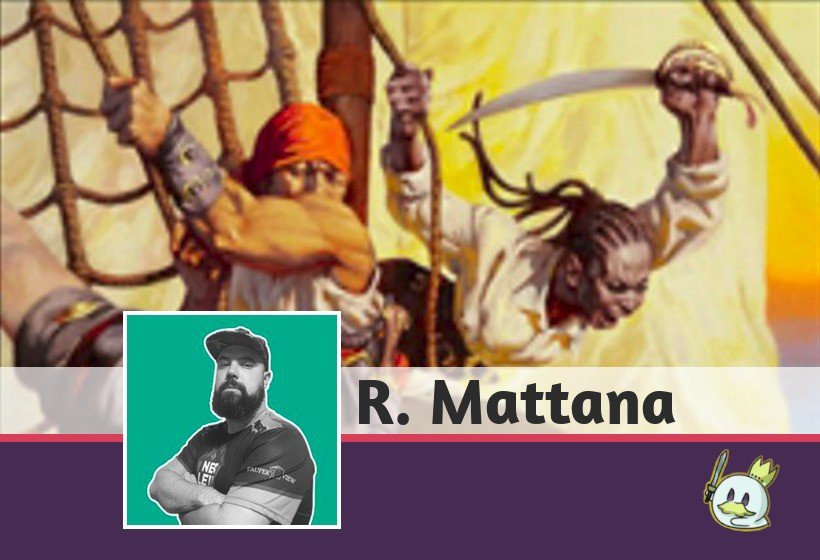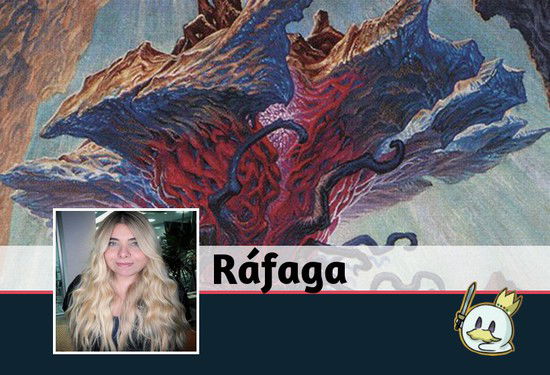For many years we got used to seeing Pauper's metagame as a "rock-paper-scissors" in which three great strategies dictated the direction of the format: Tron, Monarch and U/x (represented mainly by the interaction between Ninja of the Deep Hours and Spellstutter Sprite).
If Tron was hot, it was enough to play U/x to increase it's winning percentage over the course of the tournament; if U/x was the one on top, it was time to bet on Monarch mechanics, especially in the Boros guild; but if Boros was the deck to beat, the best way was to go back to Tron to recover the winning path.
Evidently, Pauper's metagame is much broader, and decks like Stompy, Burn, Elves, Affinity, GW Auras, Mono White Heroic, Red Deck Wins, among many others, have found their shinning moment at some point in history, but it was a consensus among players that these three great strategies were the shortest path to success in the format.
With the launch of Commander Legends and Kaldheim, Cascade became a relevant mechanic, causing several decks to start exploring the ability, and cards like Annoyed Altisaur and Boarding Party became important pillars of the format, forcing all players to have an efficient game plan that allows them to deal with this type of strategy.

Today it is possible to find in the metagame decks like Jund Cascade, RG Ponza, Cascade Tron, BG Rock, Cascade Walls and many other variations that try to exploit Cascade's ability in every way. Some lists are now more popular than others, but I believe that decks are still going through a maturation process and there are still many opportunities to be explored.
Even though Cascade is still writing the beginning of it's story at Pauper, with the current results it is already possible to say that the strategy is becoming one of the pillars of the format and the tendency is for this metagame “rock-paper-scissors” to come together with one more strand and it is increasingly difficult to choose which deck is best positioned for a particular given tournament.
Regardless of the decklist, basically all decks focused on Cascade strategy bet on mana accelerators so you don't have to wait until the sixth or seventh turn to start abusing the ability. Being the most used options at the moment:
• Arbor Elf + Utopia Sprawl + Wild Growth;
• Quirion Ranger + Walls (Axebane Guardian + Overgrown Battlement);
• Urza Lands (Tron);
• Bonder’s Ornament + Llanowar Visionary;
See some examples of decklists:
RG Ponza – albertoSD – 3rd Place Pauper Challenge
Decklist:
Jund Cascade – RiuuK1 – 12th Place Pauper Challenge
Decklist:
Walls Cascade – Hawkbundudo – 1st Place Pauper Challenge
Decklist:
Of all the options mentioned, the most relevant card, which plays a key role especially in the versions Jund Cascade, RG Ponza and BG Rock, is Bonder’s Ornament. In addition to accelerating the deck's mana, Bonder's allows you to correct the mana and most importantly, generate card advantage so that the deck does not run out of steam and can continue to press on the opponent's board, even if the initial threats of your hand have run out.
Starting the game with Utopia Sprawl, Wild Growth or Arbor Elf allows you to cast Bonder's in the second turn, so that from the third, you start to draw cards and increase the chances of finding lands, mana accelerators, removals, cascade cards, or any other answer you need more quickly.
Two other cards that helped to change the level of the green color in the format are Llanowar Visionary and Sarulf’s Packmate. Before the launch of the two “cantrips creatures”, the most relevant card with a similar effect that Pauper offered in green was Elvish Visionary, who despite playing on some Elves decklists, always had a very timid participation in the metagame , being much worse than the new options.
Llanowar Visionary has a lower body than Packmate, but its ability to accelerate mana puts it on a wolf-like plateau by helping to accelerate the deck's heaviest spells. Sarulf’s Packmate has a relevant body that faces the Augur of Bolas, and do not die to Fiery Cannonade. Not to mention the ability of Foretell that turns the wolf into a very interesting drop 2 when you open a slower starting hand.
Another card that has been standing out and that has contributed a lot to the rise of this style of deck is Pulse of Murasa. As my friend carvs would say, what an elegant card! It may not seem like it, but the entire text of the card is relevant. Its main function, of course, is to return one of these creatures with value from the graveyard after a counter or removal, but it ends up being very common for you to choose to return a land to your hand.
A move that usually saves a lot against Burn is that you return a Ash Barrens to hand in order to quickly gain 6 life and not have to wait for a creature to go to the graveyard, especially against a deck that is more interested in reducing your hit points than dealing with one of your creatures. Another common situation is that you choose to target Ash Barrens in order to find the sixth or seventh mana and cast a Annoyed Altisaur or Boarding Party stuck in your hand.
But not everything are rainbows and puppies, in the same way that you can cast an Annoyed Altisaur revealing a Boarding Party and, in the sequence, a Mulldrifter or a Lead the Stampede, you often happen to cast the dino, reveal a Wild Growth, take a Cast Down on the dino at the end of the turn and ends up staring a blank battlefield. This instability of the decklists is still something to be solved and I believe that the deck will take an even bigger leap in the format from the moment it finds a list that minimizes this type of situation.
I see a lot of players betting on large decks to try to get along with this metagame, but in general I understand that Pauper's removals are more efficient than creatures, so any creature-oriented deck will suffer mainly against Fiery Cannonade, which it is very present on decklists (main deck or sideboard). The only aggro strategy I see being effective against Cascade is Burn, as the deck is unable to respond efficiently, relying heavily on Pulse of Murasa and Weather the Storm.
And the question that begs to be asked: with this imminent rise of Cascade, the strategy can become problematic to the point of interfering in the health of the format, or is it something that comes only to aggregate and shake up a format that appeared to have a consolidated metagame?
At this moment I see Cascade as a great addition to Pauper and just having weakened Tron in some way, made the format much healthier, giving opportunity for new strategies to start gaining space in the metagame. I have been playing Pauper regularly since 2017 and have not seen the format so balanced and so inviting to innovations for years.
In times of pandemic, Magic Online has been the main platform for those who are enthusiastic about the format, and is enough following the decklists of the first places in the calendar of events managed by Cards Realm, to realize how diverse the metagame has been.
Cascade is far from an invincible strategy and just a little imagination and organization is needed to define a competent game plan that helps to cancel out the main features offered by the deck.
It is possible to focus on dealing with the mana accelerators so that the cascade player has a hard time doing the most relevant spells on the deck while he needs to deal with his board. Land destruction, spot removals, and artifact and enchantment hates are some of the options.
Another alternative is to not let the main creatures on the deck generate value using cards like Divest, Exclude, Essence Scatter, Force Spike, Distress or any other card that prevents creatures like Llanowar Visionary and Sarulf's Packmate from coming into play.
Having options that interact with the opponent's graveyard like Bojuka Bog, Relic of Progenitus or Nihil Spellbomb are also important in order to counter the effect of Pulse of Murasa, which is one of the key cards in the deck.
And you, how are you seeing this rise of Cascade in the format? Do you believe that the format is healthy?
Thank you all for reading and see you next time!














— Commenti 0
, Reazioni 1
Diventa il primo a commentare